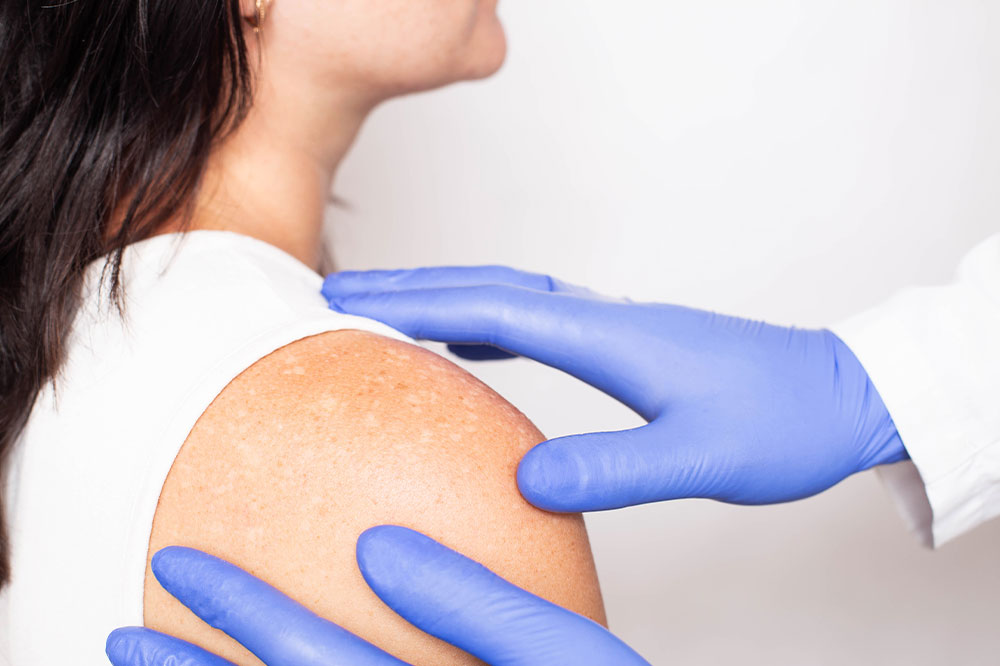Comprehensive Guide to Vitiligo: Recognizing Symptoms, Understanding Causes, and Exploring Treatment Options
This comprehensive article explores vitiligo in detail, covering its symptoms, causes, and current management strategies. It emphasizes early recognition, discusses treatment options such as phototherapy and topical medications, and highlights the importance of emotional support. The article also looks at future research directions promising new therapies. Suitable for patients, caregivers, and medical professionals, it aims to deepen understanding and promote effective management of this chronic skin condition.

Comprehensive Guide to Vitiligo: Recognizing Symptoms, Understanding Causes, and Exploring Treatment Options
Vitiligo is a chronic skin condition characterized by the progressive loss of pigmentation in certain areas of the skin, leading to the appearance of white patches that can vary in size and shape. This condition arises when the melanocytes, the specialized cells responsible for producing melanin—the pigment that gives skin, hair, and eyes their natural color—either die or malfunction. While vitiligo can affect individuals of all skin types and ages, its exact cause remains complex, involving a mixture of genetic, environmental, and autoimmune factors. Understanding the early signs, underlying causes, and management strategies is essential for improving the quality of life for those affected.
The Role of Melanin and How Vitiligo Develops
Melanin plays a fundamental role in determining the natural color and tone of our skin and hair. It provides protection against harmful ultraviolet (UV) rays and influences eye color. When the production of melanin is disrupted—whether due to cell death or immune-mediated destruction—distinct patches of depigmented skin emerge. These patches usually start small but tend to expand over time, often merging to form larger areas of skin loss. The exact mechanism behind melanocyte destruction in vitiligo is still being studied, but immune system dysfunction is considered a primary factor, where the body's immune defenses mistakenly attack its own pigment-producing cells.
Common Symptoms and Signs of Vitiligo
Recognizing the early signs of vitiligo is critical for timely intervention. The most obvious symptom is the appearance of pale, depigmented patches on the skin, which often have a well-defined border. These patches can occur anywhere on the body but are most frequently found on sun-exposed areas such as the hands, face, and neck. Notable symptoms include:
Lighter patches of skin that gradually expand
White or depigmented spots near the mouth, nose, or eyes
Loss of skin color in areas of injury or irritation
Premature graying of hair in affected areas
Increased sensitivity to sunlight, leading to sunburns in the depigmented areas
Itchy or discolored patches that may ulcerate or become inflamed in some cases
In addition to skin changes, vitiligo might also affect the eyes, leading to alterations in iris color, and in some cases, can involve the inner ear, potentially affecting hearing. Being aware of these signs aids in early diagnosis and management.
Causes and Risk Factors of Vitiligo
The etiology of vitiligo is multifaceted, with several key genetic and environmental factors contributing to its development. Researchers have identified specific gene mutations associated with increased susceptibility, suggesting a hereditary component. Family history is often present among individuals affected by vitiligo, indicating a genetic predisposition.
Autoimmune dysfunction plays a significant role, with the immune system mistakenly targeting and destroying melanocytes. This autoimmune response is linked to other health conditions such as thyroid disorders, adrenal diseases, and diabetes, which are commonly associated with vitiligo.
Environmental triggers, including exposure to certain chemicals, minor skin trauma, or significant emotional stress, may also precipitate or exacerbate the condition. Notably, oxidative stress and environmental toxins can damage melanocytes, leading to the progression of depigmentation.
While the precise causes remain elusive, understanding these factors helps in early detection and tailored management strategies for individuals at risk.
Current Treatment Options and Management Strategies
Although there is no cure designated for vitiligo, various treatment options aim to restore skin pigmentation, halt disease progression, and improve cosmetic appearance. An individualized treatment plan often combines multiple therapies depending on the extent and location of depigmentation, patient age, and overall health.
Topical corticosteroids and calcineurin inhibitors are commonly prescribed to suppress immune responses and promote repigmentation. For localized patches, topical therapies like tacrolimus can be effective. Phototherapy, particularly narrowband ultraviolet B (NB-UVB), is a widely utilized treatment that stimulates melanocyte activity in affected areas. This process involves controlled exposure to UV light, which can gradually restore pigment in some skin regions.
Emerging therapies, such as depigmentation agents, are considered for extensive vitiligo, aiming to even out skin tone by lightening unaffected areas. Additionally, cosmetic solutions—including makeup, self-tanners, and skin dyes—are used to cosmetically camouflage depigmented patches and enhance self-esteem.
Psychosocial support is a vital component of management. Counseling and support groups help individuals cope with the emotional and psychological impact of vitiligo, reducing anxiety and improving overall well-being.
Advancements in research, including gene therapy and cellular transplantation, promise future treatment possibilities but are still in experimental stages.
Living with Vitiligo: Tips and Support
Managing vitiligo extends beyond medications. Lifestyle adjustments and emotional support play an essential role in maintaining quality of life. Protective measures include rigorous sun protection to prevent sunburns and further skin damage, which can exacerbate depigmentation.
Using broad-spectrum sunscreens, wearing protective clothing, and avoiding excessive sun exposure are practical steps. Maintaining skin hydration and avoiding skin trauma can also minimize new patches. Psychological well-being can be enhanced through counseling, engaging in support communities, and practicing stress-reducing techniques such as meditation or yoga.
Educating oneself about the condition, understanding that vitiligo is not contagious, and embracing personal appearance help foster a positive outlook. Promoting public awareness and reducing stigma associated with vitiligo are critical for social acceptance and support.
Future Directions and Research in Vitiligo
The future of vitiligo treatment looks promising, with ongoing research exploring innovative therapies aimed at cellular regeneration, immune modulation, and gene correction. Advances in stem cell research, targeted biologics, and personalized medicine hold potential for more effective and permanent solutions.
Scientists are also investigating the role of antioxidants and immune system regulators in preventing melanocyte destruction, aiming to develop preventative treatments. Increased understanding of the genetic basis of vitiligo could lead to predictive diagnostics and tailored therapies that address individual patient needs.
Overall, while current treatments offer hope and significant improvements for many, continued research and clinical trials are crucial to unlocking more definitive cures and guiding future management practices.





